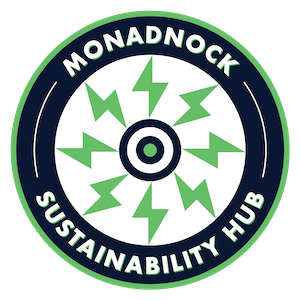by John Kondos, Clean Energy New Hampshire Monadnock Region Circuit Rider. Originally Published in The Monadnock Shopper News, Green Monadnock column, December 2023
Solar is booming. With increasing efficiency and lower costs, along with the realization that inflation is driven by volatile fuel costs, free fuel from the sun is very attractive.
Globally, the first terawatt (trillion watts) of solar took almost 70 years to be installed, the second terawatt is likely to be reached by 2025, just three years later. In 2022, photovoltaics (PV) provided 4.7% of U.S. electricity generation, an annual increase of over 20%.
Here in the Monadnock region, while we’ve made significant strides, we have many opportunities to harvest more free fuel.
In Keene, homeowners installed 200 kW of PV power in 2022, almost rebounding to the pre pandemic 2019 level of 230 kW, when commercial installations also peaked at 1,116 kW. From 2009 to last year, Keene installations total 3,845 kW. That’s about 4,229,500 kW hours per year, which at $0.19/ kWh is worth over $803,600 of electricity produced per year by Keene homes and businesses.
Some notable larger installations in the area include Keene’s waste water plant at 1.36 MW and the public works 643 kW solar generator. Peterborough’s waste water plant at 944 kW was the largest in the state in 2015. ConVal high school boasts a 247 kW system. Unfortunately, it’s the only substantial PV system at a local school. Early solar adopters, the Monadnock Food Co-op and Filtrine have added to their initial solar systems.
So far utility scale projects measured in megawatts (MW or thousands of KW) have failed to materialize. We’ll need to increase projects of all sizes, if we hope to reduce our dependence on fossil fuels and their increasingly costly and dangerous pollution.
Opportunities
Since you need a good south facing site to harvest the sun, municipalities are surveying their properties to identify suitable solar sites and prioritizing projects. Harrisville recently contracted for its 2nd town-owned PV project for the highway barn; Hinsdale recently surveyed options and is prioritizing them for development; while Keene has several PV systems, its Energy & Climate Committee Solar Work Group recently recommended three more sites which the City Council approved for prioritization. Now Keene’s Solar Work Group is planning a solar business coaching program. They’ve recruited some businesses with solar to act as coaches for businesses thinking of going solar.
Clean Energy NH’s (www.cleanenergynh.org) Energy Circuit Rider (ECR) assists municipalities with project development from site surveys to project completion. The Monadnock Sustainability Hub (www.GreenMonadnock.org) has experience with Solarize campaigns and can advise communities that are interested in how to pursue this option for homes & businesses.
The Federal Investment Tax Credit (ITC), of 30% of the cost, has been expanded to include municipalities & non-profits with Elective (direct) Pay. This accelerates owning the power system over Power Purchase Agreements (PPAs) which require 5 years before a town could own the PV system. An attractive opportunity is turning brownfields, such as a capped landfill or contaminated industrial site, into a solar power plant. The ITC provides a 10% adder to support turning a liability into a cash generating asset. Local communities from Winchester to Dublin are exploring their brownfields. Schools are an obvious solar opportunity not just to reduce energy expenses but as educational tools, understanding and monitoring PV power production, analyzing savings and exploring career options.
Municipal PV ownership is further supported by bonding; low interest loans; and grants. Many projects can be structured so that the electricity savings and other incentives cover the bond or loan payments until paid off, then the fuel is free.
Various Federal competitive grant funds also support projects, particularly those benefiting low-income citizens. NHDOE will be offering grants, using Federal funds, for municipal PV systems under 60 kW. Like many grants it will require a 20% match. This budget season is a good time to include a warrant article to raise the funds for matching grants that save taxpayers money, build resilience and reduce the warming of our planet.
It’s time to see whether your property or municipality’s property can harvest the sun’s energy to save money and reduce our dependence on fossil fuels.
John Kondos is a sun harvester and since 2006 has been working on solutions to the climate crisis with Home-Efficiency Resources, the Monadnock Sustainability Hub, Citizens Climate Lobby and Clean Energy NH.

